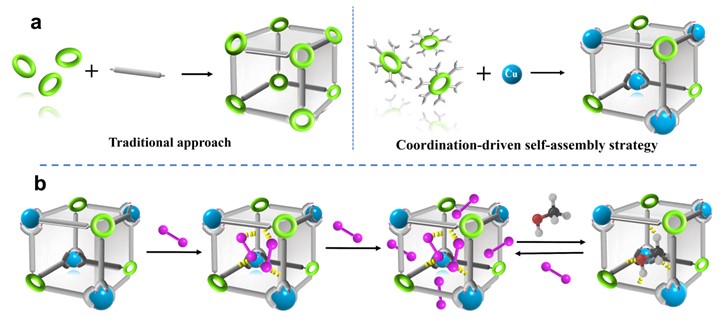Iodine radioisotopes (129I and 131I) are unstable and volatile, and will cause great harm to the environment and human health. Therefore, the development of a new generation of iodine adsorbents with low cost, good adsorption performance and easy recycling is very important .
In a study published inAngew. Chem. Int. Ed., the research group led by Prof. ZHANG Jian and Prof. FANG Weihui from Fujian Institute of Research on the Structure of Matter of the Chinese Academy of Sciences reported a coordination-driven self-assembly strategy towards adsorbents for the sequential confinement of iodine molecules.
The researchers first designed and synthesized aluminum molecular rings with potential coordination anchors (pyridyl nitrogen (NPY) coordination sites)
Then according to hard and soft acid-base theory, they introduced a second metal copper ion so as to promote further coordination linkages and assembles the metal copper ion into infinite structures based on {Al10} molecular ring.
Compared with the traditional methods, this coordination self-assembly strategy is ubiquitous. By adjusting the type of copper source and the amount of template, the researchers isolated heterometallic frameworks based on molecular rings with different sizes.
These porous materials can quickly remove iodine from cyclohexane solutions with a high removal rate (98.8%) and considerable loading capacity (555.06 mg/g).
Besides, by studying aluminum oxo clusters/aluminum oxo compounds (AlOCs) synthesized for iodine capture, the researchers found that AlOC-85 has a variety of iodine adsorption sites, which is conducive to the gradual and orderly adsorption of iodine molecules. In addition, the porous material can be recycled via solvent exchanged by methanol molecules.
This study provides reference for the design and synthesis of new materials for radioactive element capture.

Diagram showing a designable assembly of AlIII molecular rings for sequential confinement of iodine molecules (Image by Prof. ZHANG’s group)
Contact:
Prof. ZHANG Jian
Fujian Institute of Research on the Structure of Matter
Chinese Academy of Sciences
Email: zhj@fjirsm.ac.cn